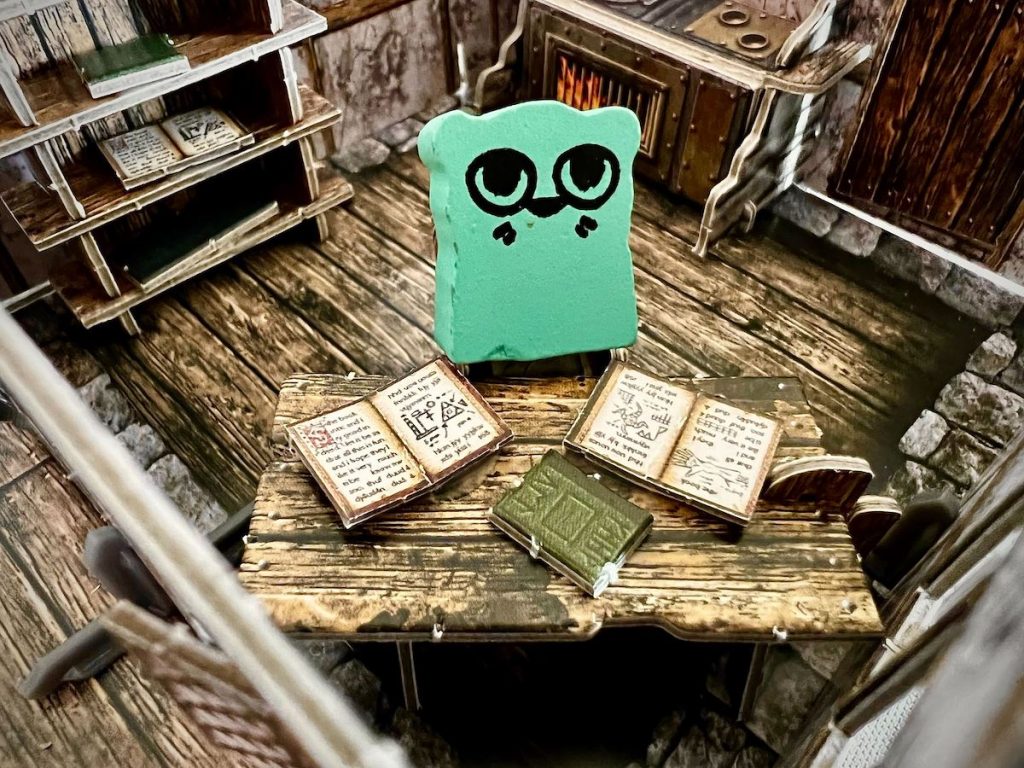Creating and building a platform to sell board and card games is only part of the process that leads to success in this rapidly growing market. Effectiveness can only be achieved through in-depth knowledge of the industry and well thought-out solutions when implementing an e-commerce platform. Proper customer service is one of the leading areas in running a board game business.
The culture of extreme urgency built up by the Internet is a very difficult environment for conducting business. Providing the right level of customer service is not at all easy. As many as 80% of companies are convinced of excellent customer service and fantastic experiences they deliver to customers. The customers are of a different opinion, with only 8% of them sharing the companies’ beliefs. In the complexity of difficulties, however, there are also opportunities worth exploiting. On the one hand there is enormous growth in e-commerce, on the other hand 21% of millennials say they are willing to pay more for a better customer experience. It is essential to take advantage of this fact, and it is important not only to meet customers’ requirements, but also to exceed them.
Every owner of a board game platform should develop their own style of customer service, communication with customers and build an appropriate process for handling queries, contact, assistance, etc. So it’s a good idea to start by designing at least one diagram for the process of customer service on the platform.
Knowing the customer, their needs, habits and attitudes towards changing trends is the key to success, according to the concept of me-commerce, which is becoming increasingly popular in the e-commerce industry. There are no shortcuts here, you have to keep up with changes and trends. Customers’ expectations are changing all the time, and the task of a board games platform is to meet their expectations.

The essence of building the right relationship with customers is communication. In order to propose the best channels and ways of communication, it is necessary to study preferences of users, see which tools they use most often in contact with the company. Telephone, live chat or e-mail may no longer be sufficient for communication. It is also worth testing other tools: Messenger, Whatsapp, Skype, Telegram, Twitter, Discord, etc. However, in the beginning you can choose one tool, get your users used to it and communicate effectively and consistently there.
To get to know your customers and establish lasting relationships with them, a personalised approach is essential. Customers expect to be treated uniquely, shortening the distance, addressing them by name, procedures that make communication simply human, definitely improve the interaction of customers with the platform. Especially in the board game industry, expert knowledge counts. For customer service is not just about simply addressing problems and answering questions, but also about making suggestions, following the customer, sharing expertise, details. Such an approach builds the credibility of the platform and attracts regular customers who know that they can always count on professional, highly personalised assistance from the customer service, also in terms of purchases.
In addition, dedicated messages give you the best chance of receiving feedback, an evaluation, or a recommendation of a product, shop or service. This not only increases the value of the platform in the eyes of customers, builds the reach of the brand, but it can also be a valuable source of ideas for improving customer service (especially when customers give negative comments). How do you compete for customers; recommendations and feedback? By encouraging them give reviews after each transaction. Using bonuses for subsequent orders, offering free e-books or free delivery above a certain price threshold of the order, offering promo packs, card sets, sleeves for cards, posters, etc.
Even if the platform uses communication automation tools, e.g. chatbots, mailing, knowledge bases, etc., it is worth taking care to properly configure questions so as not to bombard the customer with dry, impersonal messages. It is always necessary to answer questions in a personal manner, to build up consistent communication and thus a relationship with users, i.e. potential customers. It is important that solutions are as simple, fast and effective as possible, so that they do not involve users beyond their need to obtain information quickly. A key indicator for the automation of customer service processes is to minimise the customer’s efforts in receiving a response. Self-service, therefore, means properly structured support sections, FAQs, a knowledge base, the ability to change orders by oneself, redirection of shipments, etc. Don’t forget that the use of solutions facilitating automation is also very important in the mobile channel!

The issues indicated above will allow you to easily make your e-commerce platform a real customer service machine. So you can choose any step, or focus on perfecting one or two selected areas to improve customer service you offer. We propose below some specific solutions in the area of e-commerce platform that can help to build the best customer service. However, it is worth treating it more as a starting point and a necessary minimum to build your own path to customer service for creating the best possible user experience:
Customer service today must be thought of as a system of communicating vessels. At its centre is the e-commerce platform with its solutions and tools, e.g. after-sales service, helpdesk etc. However, good customer service is no longer just about handling payments on the website and shipping goods. Customer service today also includes communication and automation within the platform (chatbots and live chat), communication outside the platform itself (telephone, Skype, Whatsapp, etc.), and communication in social media channels. Here, the belief that every customer can be a micro influencer and create a good image for the platform on social media plays a significant role.

There is a saying that a good customer is a satisfied customer. And there is no exaggeration in this if you look at figures. They say that acquiring a new customer is up to 25 times more expensive than keeping an existing one. However, a customer who is satisfied with the customer service and contact is likely to come back for more purchases, and the chance of completing a purchase is up to 70% for a regular customer, compared to a maximum of 20% for a new customer. Thus, the most important measures that can and should be taken in terms of customer relations in e-commerce are:
The stakes are significant. Although there is no reliable research on customer retention in the board game industry, statistics and figures from the e-commerce industry in general can be an excellent reference point. In the U.S., companies lose 62 billion dollars a year due to poor customer service. So there is a lot to play for, and churn is currently the hottest buzzword in the e-commerce industry.
Churn rate, that is the percentage of customers who leave, has become more than just a marketing term. Many analysts evaluate the overall health of a company on the basis of this indicator, which can be studied, for example, by analysing the number of user departures in the Google Analytics panel. The higher the customer churn rate, e.g. 35% (i.e. 35 customers out of 100), the worse the company is doing in terms of profitability. Significantly, many CEOs and managers prefer to use retention rates and see only the bright side of their business, i.e. the number of retained customers. This short-sighted tactic can prove to be a mistake, as analysing the churn rate gives you a better understanding of business problems and allows you to control them. Observing the churn rate allows you to quickly adjust your marketing strategy if it starts to rise. What’s more, it also allows you to make predictions about future customer behaviour.
There is also another saying in the trade sector: a dissatisfied customer sets an opportunity. An unfavourable churn rate should therefore be seen as an opportunity to retain customers. This will be facilitated by building an anticipative strategy, being open to the customer, offering new services, etc. In doing so, it is important to look at the indicator not as a number, but as the real behaviour of departing customers and to do everything possible to retain them.
Marketers who use churn in their analysis emphasise that it is always worth comparing the rate on a year-on-year basis to build a knowledge base of what can be done to better serve customers and improve the rate in the following year. The churn rate is also affected by acquiring inappropriate customers, i.e. those who quickly disappear from the shop’s reach. However, this seems to be one of the minor problems in the board game industry, as customers here are very aware of their choices and preferences and are attached to brands and titles.
An excellent and popular product in the board game world, a powerful platform integrated with the best solutions for the user path, a huge community focused around the game or the publisher – these factors are not enough to succeed in the increasingly crowded board and card game market.
Customer service is the element that, with good planning, guided improvement, can make a significant difference to your competitors. Standing out with a consistent, fast, friendly, personalised, well-cultured process for handling enquiries and contact between the platform and users is something that can distinguish you from your competitors. Building up an expert position, responding to issues in communication or product reviews will ensure status, trust and customer loyalty.
Certainly there are many tasks to be performed by every owner of an e-commerce platform with board games in order to achieve the ideal customer service: from proper analysis, through process structuring, training a dedicated team of consultants, building tools, to drawing conclusions and improving customer service as a continuous process. However, it is worth remembering that many of these issues and tasks can be ensured by a well-designed, configured and implemented – right from the start – e-commerce platform. Is it worth it? Certainly yes, because even the smallest improvement in customer service can result in better conversion. And every board game publisher dreams of excellent conversion and efficient customer service. It can be achieved, you just have to try out!
Sources: